How to store caladium bulbs for winter?
I still love the colorful, pointed arrow or heart-shaped leaves of caladiums.
While it is a tropical perennial plant that is native to South America, you can grow caladiums as an annual plant.
It rarely flowers, but the display of green, pink, cream, and red leaves stays spectacular.
In winter, it gets really, really cold where I live. When I first planted caladiums, I didn’t know they wouldn’t survive.
Come spring, I was utterly disappointed and quickly learned about winters and these tropical plants.
That’s why I’ve put this comprehensive guide together for you, so you know exactly whether you can keep your caladiums in the ground or in pots, or if you have to start digging them up to keep them safe during winter.
Table of Contents
Store Caladium Bulbs for Winter
If you live in a USDA hardiness zone of 9-11, to store caladium bulbs leave them in the ground. If you live in a USDA zone 8 and the ground doesn’t freeze, mulch the ground to insulate the tubers. For USDA zones 8 or below where the ground freezes, dig up the tubers, overwinter them, and replant them when it’s warmer.
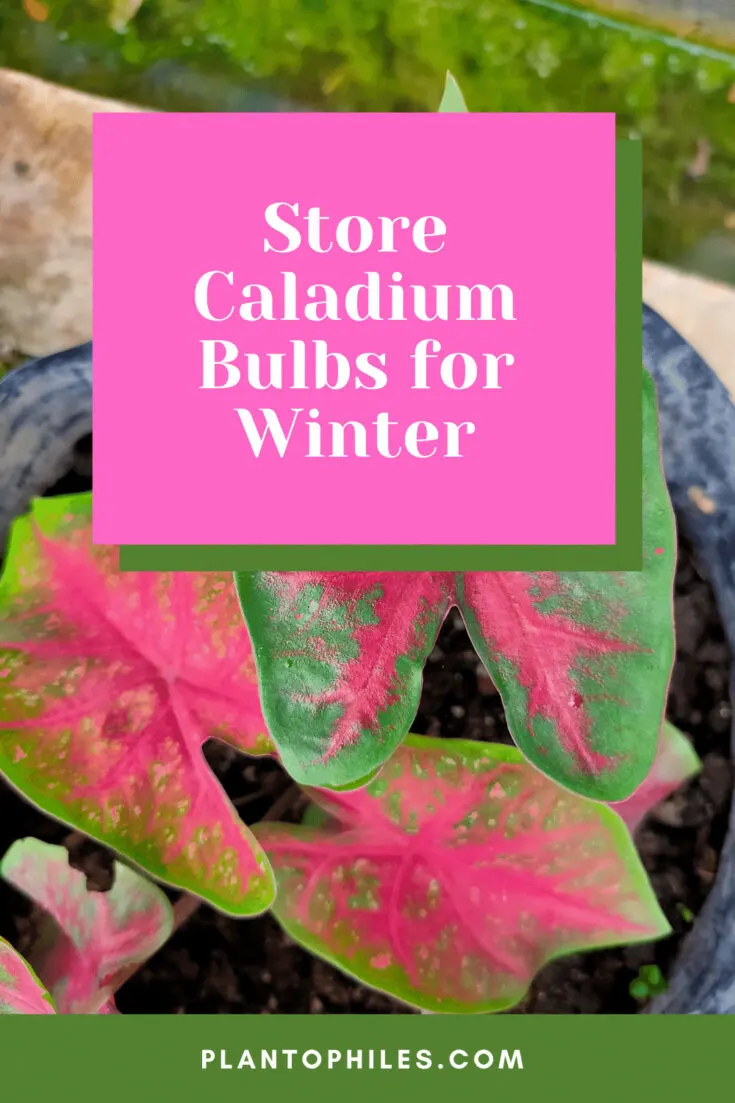
Store Caladium Bulbs for Winter
3 Ways to Store Caladiums Bulbs During Winter
How you store caladium bulbs for the winter or overwinter them, depends on where you live and where your caladiums are planted.
For my caladiums, I need to follow method number 3 because I live in a colder climate.
Method 1: Keep Caladium Bulbs in Their Pots
If you’ve planted your caladiums in pots, then you can leave them as-is for the winter.
If your caladium pot plants are normally outside, then bring them inside when outside temperatures reach 60℉ (16°C) or below. This will extend their growing season.
As it gets cooler, your caladiums will die as they enter their resting season. Once your plant is dormant, cut off the leaves.
Store your pot plants in a dry spot where temperatures preferably stay around 60℉ (16°C).
Don’t water your plants at all during the winter as you want the soil to dry out.
When spring arrives, you can move the pots outside again and resume your regular watering schedule.
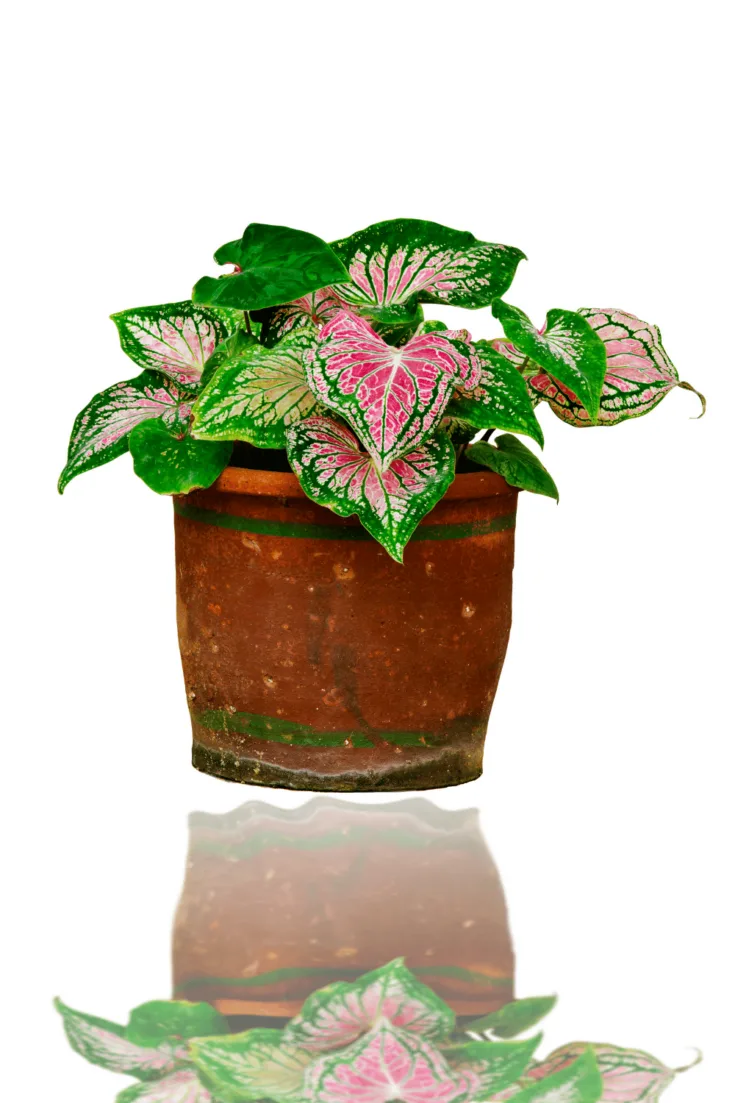
Caladium bulbs in pots can remain in pots for the winter
Method 2: Leave Caladium Bulbs in the Ground
If you live in a warm climate, USDA plant hardiness zones 9-11, then just leave your caladium tubers in the ground over the winter season.
In winter, your caladiums go dormant, and once this happens, the foliage will turn yellow and then brown, until the leaves eventually die.
However, you don’t need to worry about this as your plants will grow back when spring―and warmer weather―arrives.
The only thing of concern is you should ensure that your caladiums don’t get too much water since the roots rot if your plants are kept too wet.
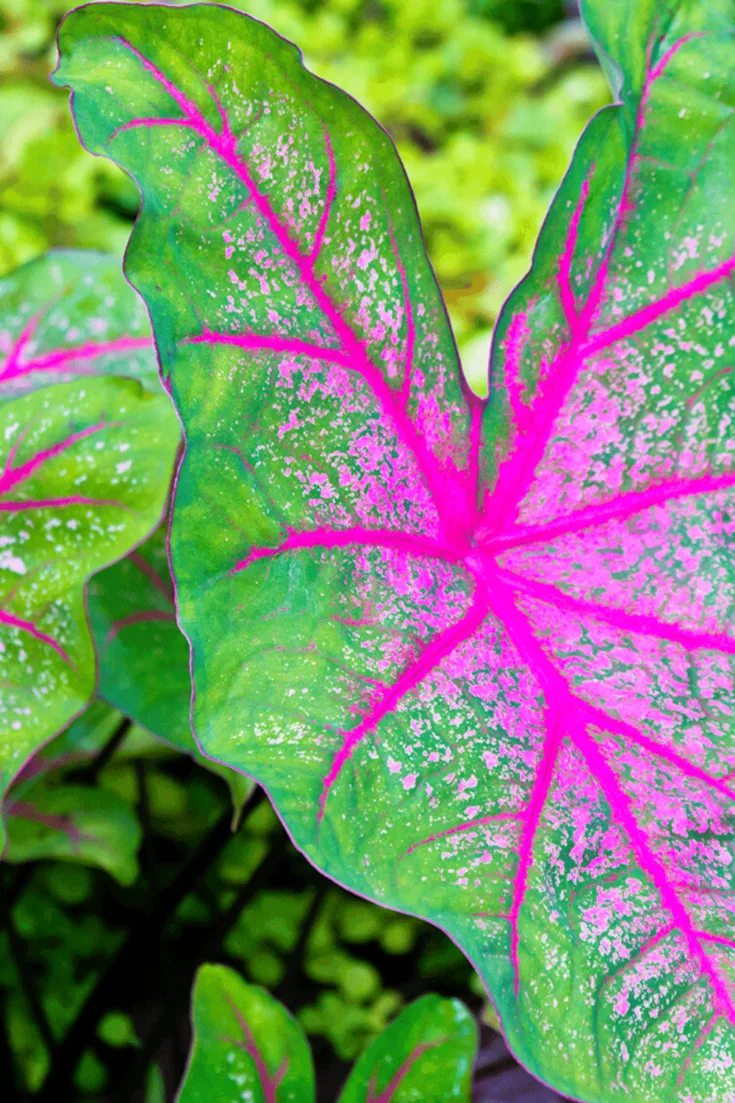
If you live in USDA plant hardiness zones 9-11 you can leave the caladium bulbs in the ground
Method 3: Storing Caladium Bulbs During Winter
The last method is popular for those of us who live in very cold climates with temperatures below 60℉ (16°C).
Caladiums are expensive plants, so I prefer to dig out my bulbs and overwinter the tubers, and then replant them when the weather turns warmer.
Caladiums are not frost-tolerant. I keep a close eye on my plants when summer ends and the weather starts to turn.
Once the leaves become yellow and droop toward the ground, I know it’s time to dig up the tubers.
One year I waited too long, and all the foliage had died. And, you don’t want this thing to happen.
I spent way too long in the garden, carefully digging around to find all my now-hidden caladium bulbs.
For digging, I use a garden spade or fork and then gently lift the bulbs out of the ground. Don’t cut off any of the foliage.
It is vital to rather start digging a bit away from the caladium;
I definitely don’t want to accidentally cut the bulbs or damage them.
Once I’ve dug up the bulbs, I gently shake them so excess soil can fall off but I don’t wash it off.
Next, I prepare my caladium tubers for overwintering. Once they’re out of the ground, I let them dry out for 7 days.
Once the bulbs are dried, you can gently and easily pull the leaves and their stems off the tubers. All leaves need to be removed before the bulbs are stored.
Now that my bulbs are ready to be overwintered, I prepare a cardboard box that is filled with dry coco coir or peat moss.
I also like to mix in some perlite, but if you don’t have any, you can also use pet bedding, newspapers, or sawdust so your caladium tubers have a soft bed.
When my box is ready, I loosely pack my bulbs into it and I ensure the tubers don’t touch each other.
Then I store the box in my basement on a shelf.
Here, they will stay dry, and my basement’s temperature also stays around 60℉ during winter (16°C).
If the temperature drops, I put on the heater for a bit.
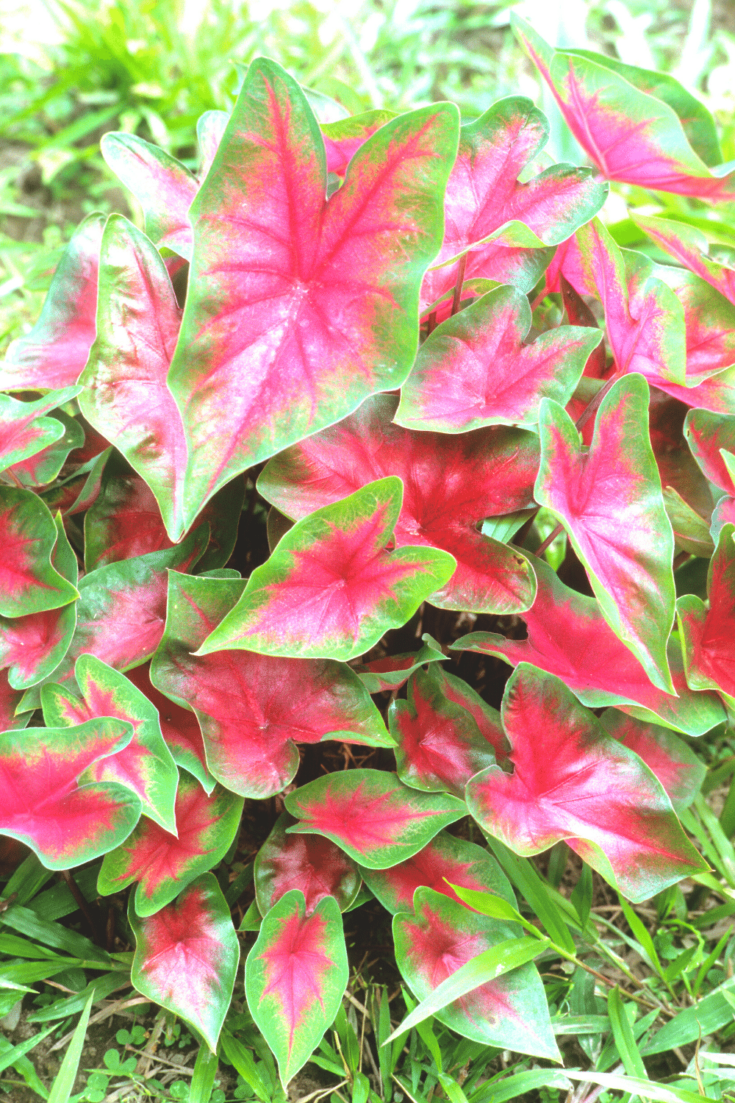
If you live in an area with cold temperatures below 60℉ (16°C), caladium bulbs need to be dug out, stored and overwintered indoors
Special Care Tips for Your Caladiums
Here are some tips to ensure your caladiums overwinter well:
- If your caladiums stay in the ground, ensure they don’t get too much water.
- Check on your caladium throughout winter, whether they are in a pot, in the ground, or stored in your basement.
- Check that the bulbs stay dry.
- Ensure that no mold is growing on the tubers when you’ve boxed them. If you do find mold, immediately throw the bulb away so that mold doesn’t get a chance to spread to your other tubers.
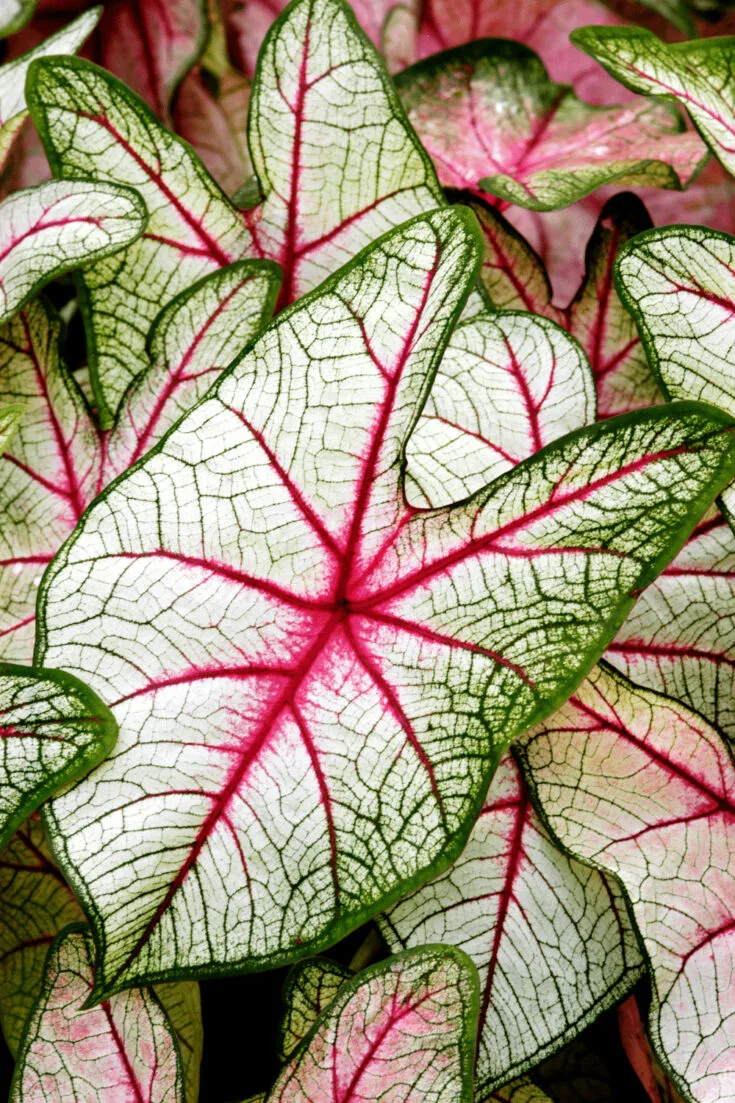
You can insulate caladium bulbs with insulate your plants with mulch when left in the ground over winter
Frequently Asked Questions about How to Store Caladium Bulbs for Winter
When should I dig up caladium bulbs?
The best time to dig up your caladium bulbs is when the plant’s leaves turn yellow. Another indicator is when the leaves look tired, aka, they droop toward the ground. If you wait too long, the leaves will turn completely yellow or brown, and then when you blink, the foliage will have disappeared and you won’t be able to easily find the tubers.
Can I leave the caladium bulbs in the winter?
Leaving your caladium bulbs in the ground during winter depends on where you live. If you live in a USDA hardy zone 8 or below, or if your winter temperatures fall below 60℉, then it is too cold for your caladiums to survive and it’s best to remove and store them.
The Final Word
Caladiums prefer warmer climates as they are tropical plants by nature. However, you can overwinter your plants in a few easy steps.
If you live in USDA zones 9-11, keep your caladiums in the ground but ensure they don’t get too much water, or if the temperature drops to a zone 8 level, insulate your plants with mulch.
If you’ve potted your caladiums, then bring them indoors and don’t water them for the whole of winter.
And if you live in a USDA zone 8 or below like me, then you want to carefully dig up your caladiums, dry them out, place them in a box that’s lined with soft materials, and store them until spring arrives.

Daniel has been a plant enthusiast for over 20 years. He owns hundreds of houseplants and prepares for the chili growing seasons yearly with great anticipation. His favorite plants are plant species in the Araceae family, such as Monstera, Philodendron, and Anthurium. He also loves gardening and is growing hot peppers, tomatoes, and many more vegetables.


